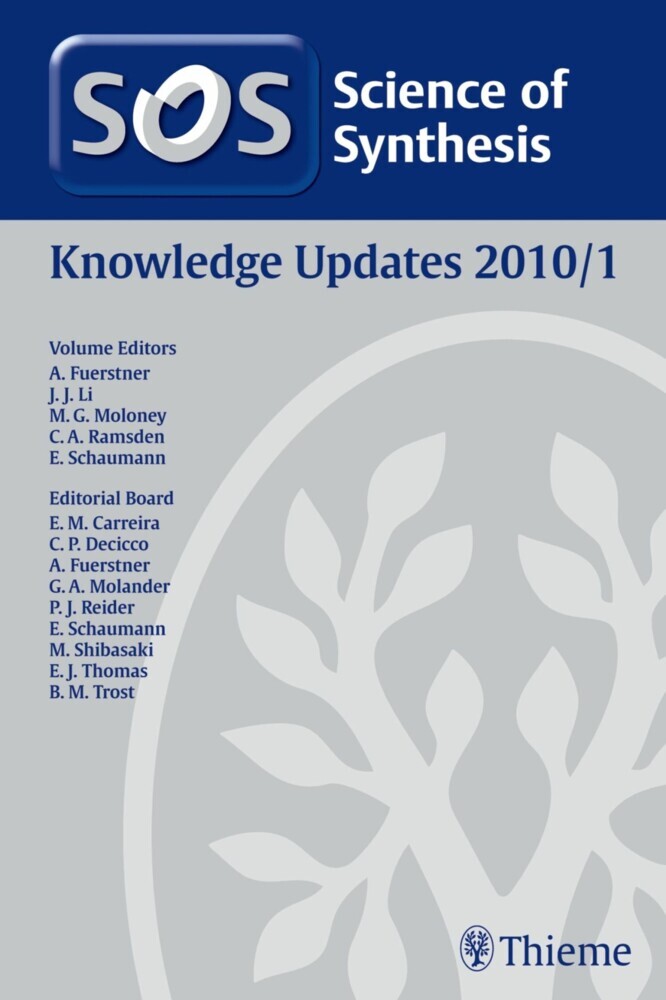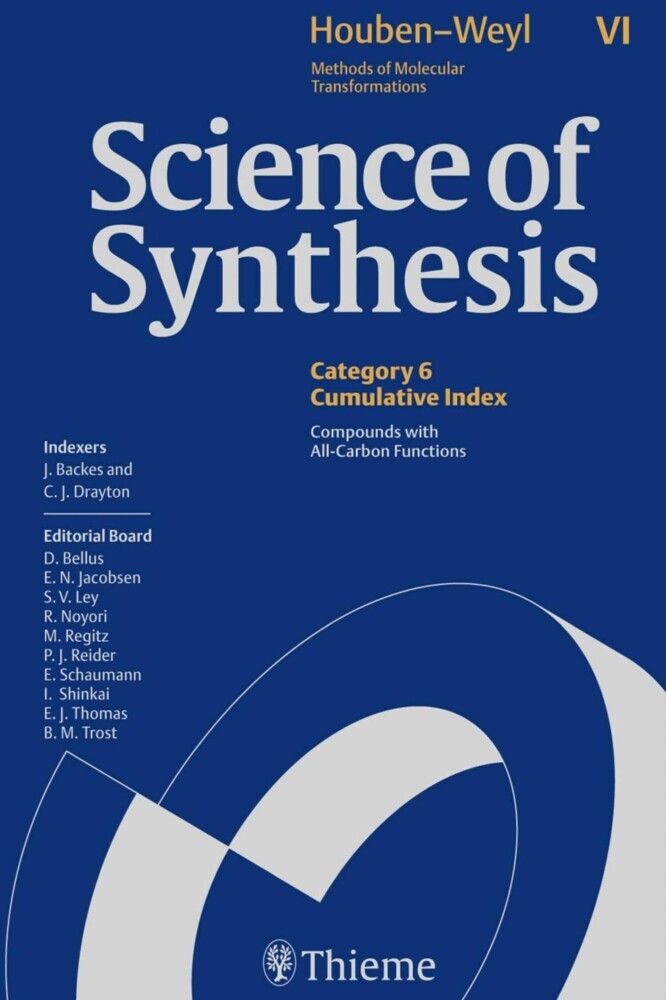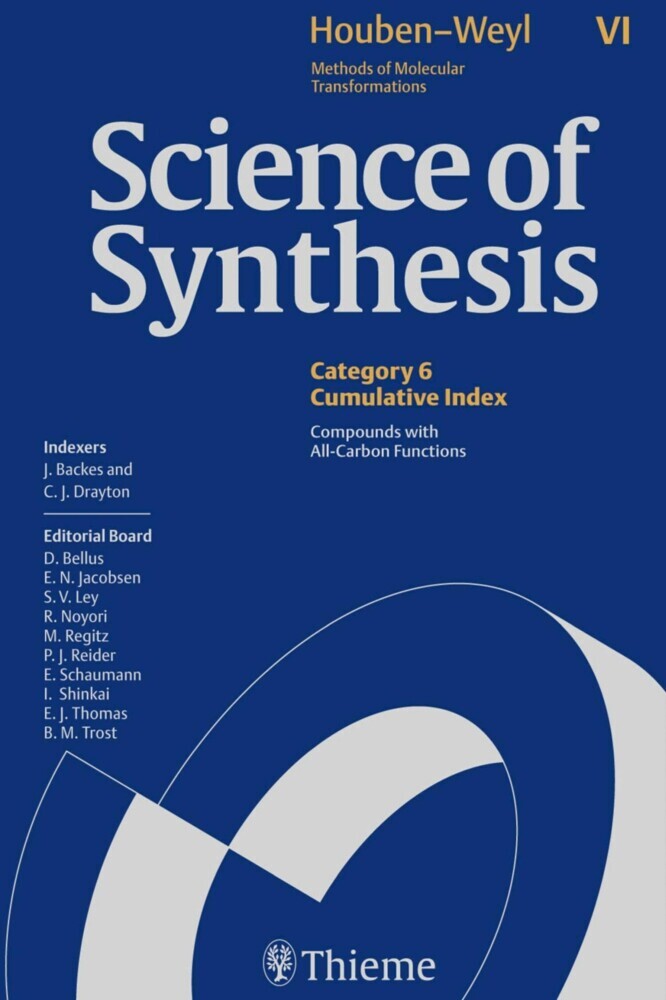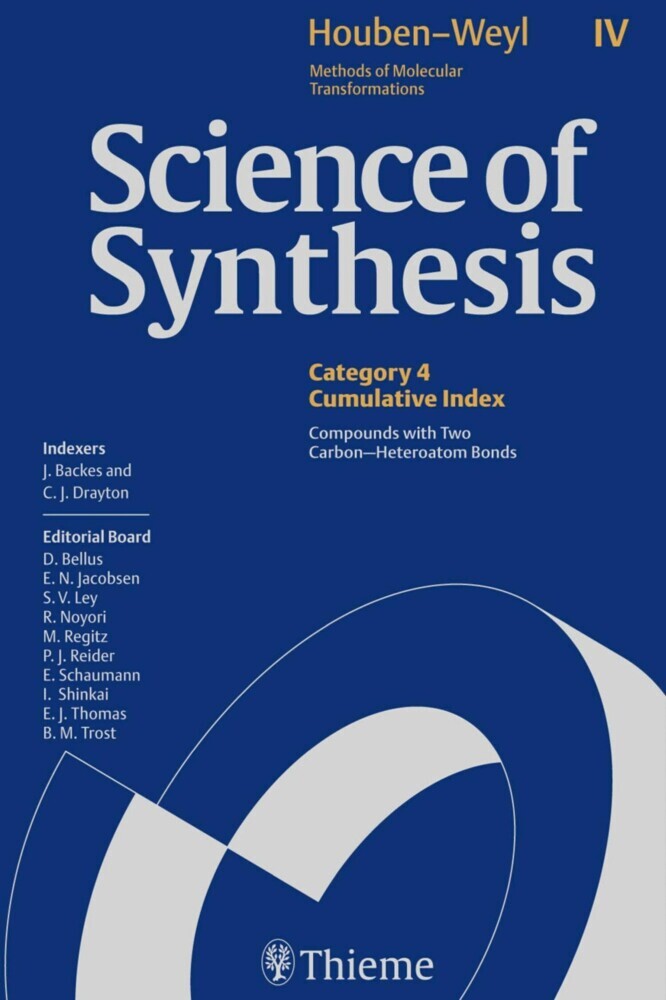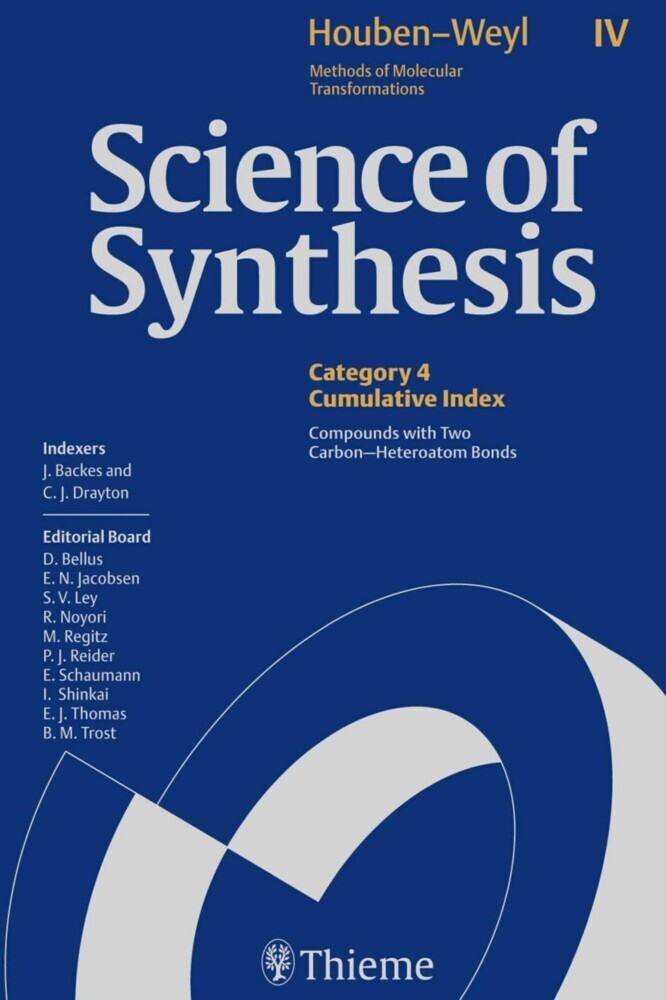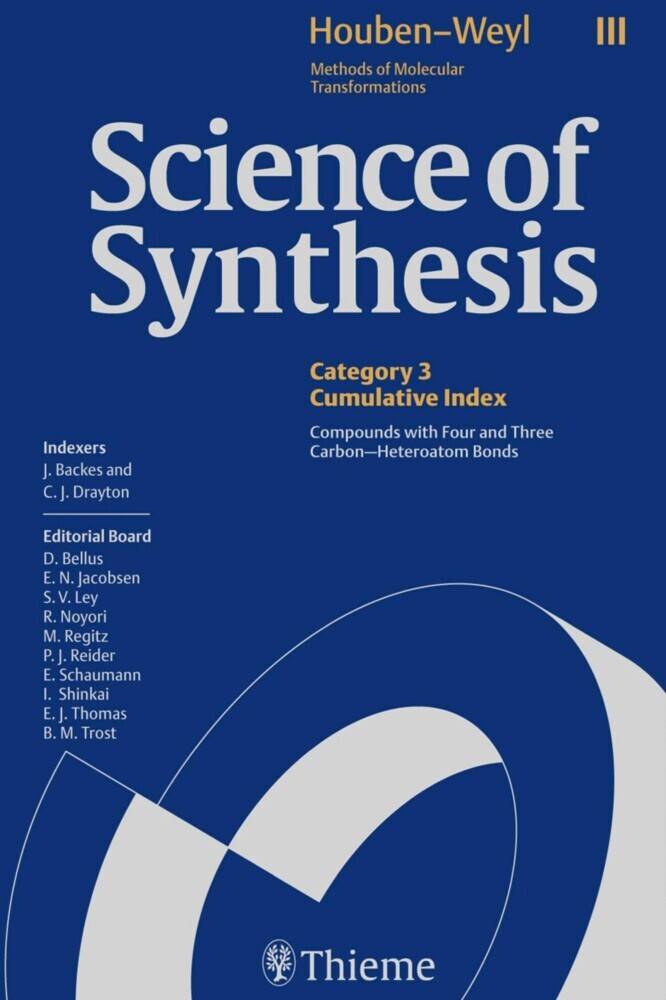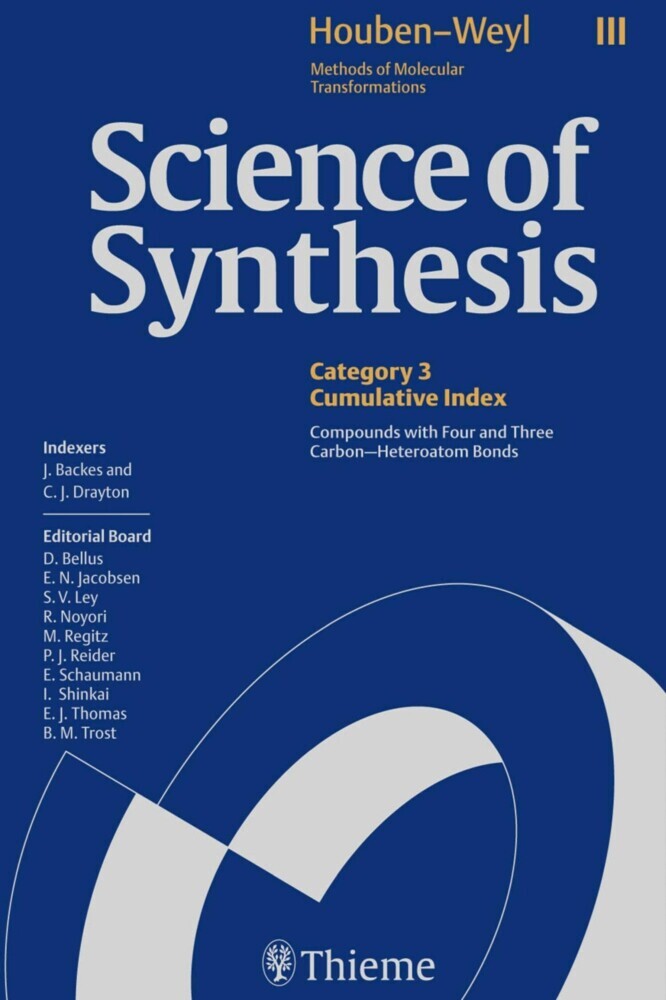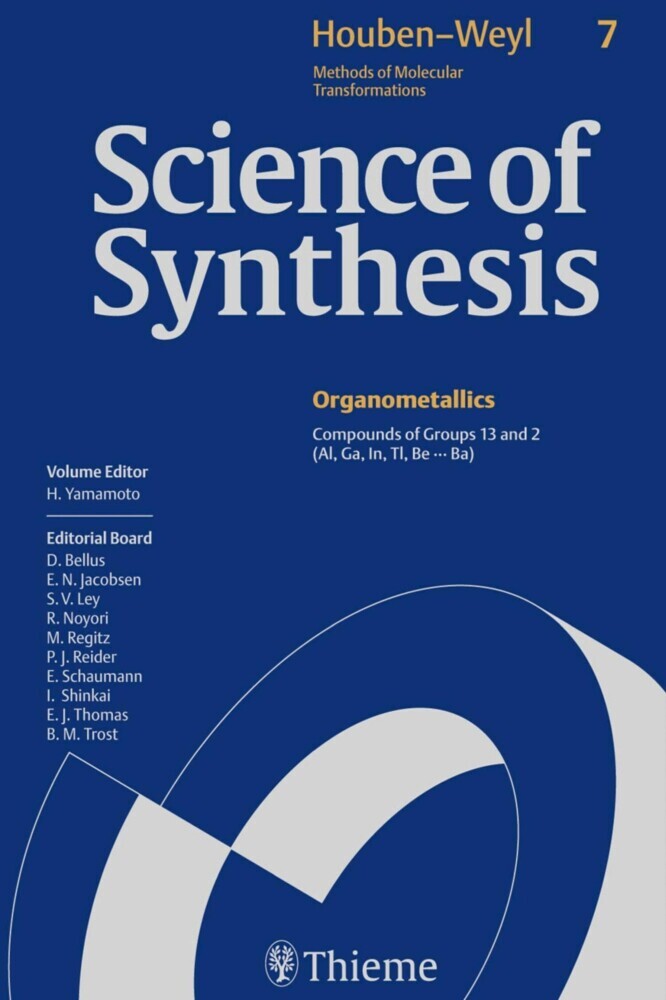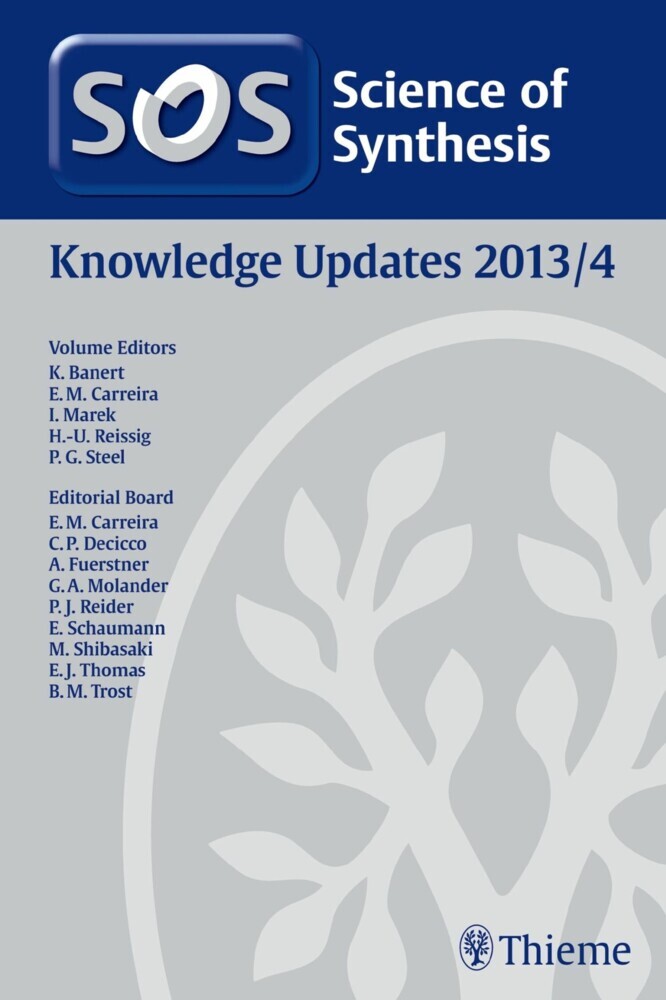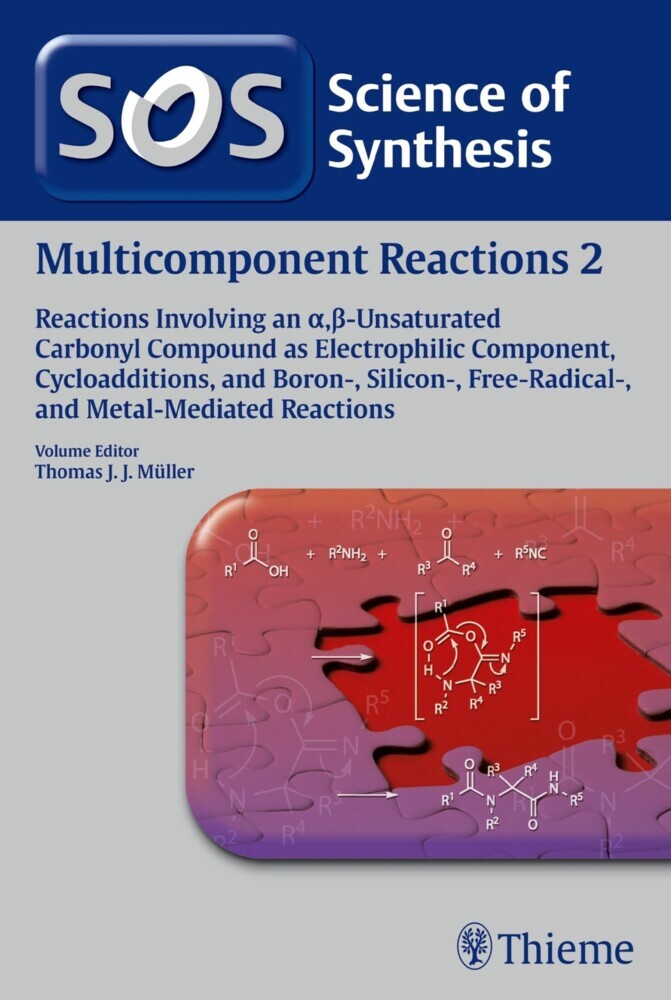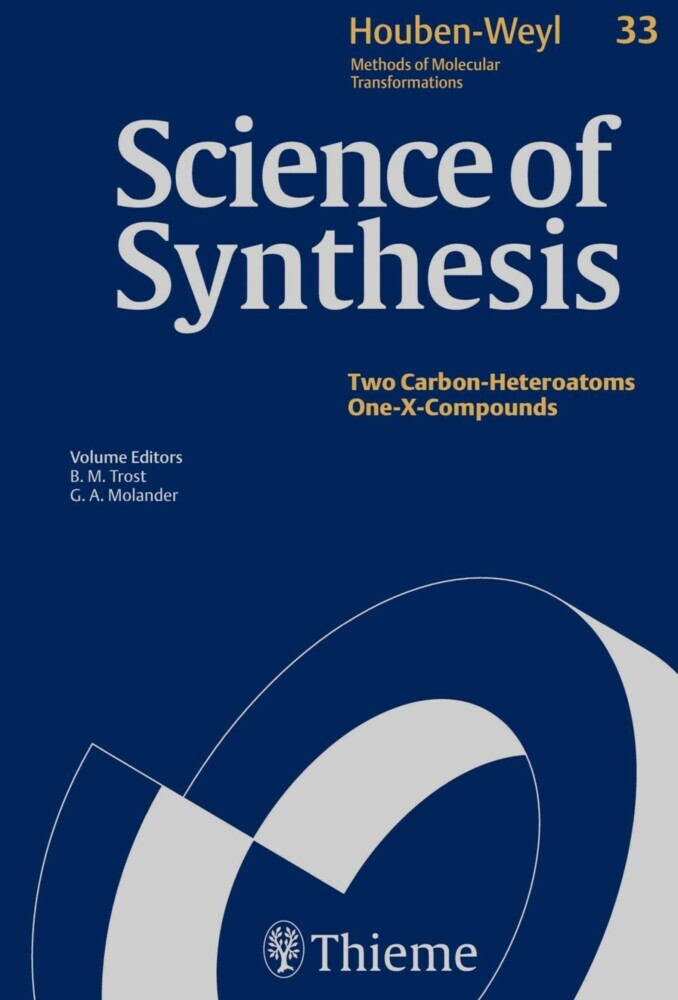Science of Synthesis Knowledge Updates 2010 Vol. 1. Vol.1
The Science of Synthesis Editorial Board,together with the volume editors and authors, is constantly reviewing the whole field of synthetic organic chemistry as presented in Science of Synthesis and evaluating significant developments in synthetic methodology. Four annual volumes updating content across all categories ensure that you always have access to state-of-the-art synthetic methodology.
Content of this volume:
Germanium cyanides, acylgermanes, a-halo- and a-alkoxyvinylgermanes, a-halo-, a-hydroxy-, a-alkoxy-, and a-aminoalkylgermanes, alkynylgermanes, aryl- and heteroarylgermanes, propargyl- and allenylgermanes, selenophenes,
tellurophenes, isoxazoles, 1,2-benzisoxazoles and related compounds, benzoxazoles and other annulated oxazoles, isothiazoles, benzisothiazoles, benzothiazoles, isoselenazoles, annulated isoselenazole compounds, selenazoles, annulated selenazole compounds, isotellurazoles, and annulated isotellurazole and tellurazole compounds, pyridopyrazines and iodoarenes.
1;Science of Synthesis: Knowledge Updates 2010/1;1 1.1;Title page;5 1.2;Imprint;7 1.3;Preface;8 1.4;Abstracts;10 1.5;Overview;24 1.6;Table of Contents;26 1.7;Volume 5: Compounds of Group 14 (Ge, Sn, Pb);48 1.7.1;5.1 Product Class 1: Germanium Compounds;48 1.7.1.1;5.1.1.8 Germanium Hydrides;48 1.7.1.1.1;5.1.1.8.1 Method 1: Synthesis by Reduction of Germanium Halides;49 1.7.1.1.2;5.1.1.8.2 Method 2: Applications in Reduction of Organic Halides;49 1.7.1.1.3;5.1.1.8.3 Method 3: Applications in Hydrogermylation of C--C Multiple Bonds;50 1.7.1.1.4;5.1.1.8.4 Method 4: Applications with Acids and Bases;51 1.7.1.1.5;5.1.1.8.5 Method 5: Applications in Palladium(0)-Catalyzed Coupling Reactions;52 1.7.1.1.6;5.1.1.8.6 Method 6: Application as an Alternative to Tributyltin Hydride in Radical Chain Reactions;54 1.7.1.1.7;5.1.1.8.7 Method 7: Application as Precursors for Germyl Cation Generation;55 1.7.1.2;5.1.15.2 Germanium Cyanides;58 1.7.1.2.1;5.1.15.2.1 Method 1: Synthesis from Halogermanes by Substitution with Trialkylsilyl Cyanides;58 1.7.1.3;5.1.16.6 Acylgermanes;62 1.7.1.3.1;5.1.16.6.1 Method 1: Synthesis from Germyl Enol Ethers by Hydrolysis;62 1.7.1.3.2;5.1.16.6.2 Method 2: Synthesis from a,a-Diheterosubstituted Germanes by Hydrolysis;63 1.7.1.3.3;5.1.16.6.3 Method 3: Synthesis from Terminal Alkynes by Carbonylation;64 1.7.1.3.4;5.1.16.6.4 Method 4: Application of Acylgermanes as Radical Acceptors;65 1.7.1.3.5;5.1.16.6.5 Method 5: Application of Acylgermanes as Amide Precursors;66 1.7.1.4;5.1.18.4 a-Halo-and a-Alkoxyvinylgermanes;68 1.7.1.4.1;5.1.18.4.1 Method 1: Synthesis of a-Alkoxyvinylgermanes from a-Metallovinyl Ethers by Substitution;68 1.7.1.4.2;5.1.18.4.2 Method 2: Synthesis of a-Halovinylgermanes from Alk-1-ynylgermanes by Hydro/Carbometalation-Halogenation;69 1.7.1.4.3;5.1.18.4.3 Method 3: Synthesis of a-Halovinylgermanes from a-Halovinyl Sulfones by Radical-Mediated Desulfonylation;71 1.7.1.4.4;5.1.18.4.4 Method 4: Application of a-Halovinylgermanes in Palladium-Catalyzed Cross Coupling with Organic Halides;72 1.7.1.5;5.1.19.7 a-Halo-, a-Hydroxy,- a-Alkoxy-, and a-Aminoalkylgermanes;74 1.7.1.5.1;5.1.19.7.1 Method 1: Synthesis of a-Hetero- and a-Haloalkylgermanes from Halogermanes by Substitution;75 1.7.1.5.2;5.1.19.7.2 Method 2: Synthesis by Interconversion of a-Hetero- and a-Haloalkylgermanes by Substitution;76 1.7.1.5.3;5.1.19.7.3 Method 3: Synthesis of a-Hydroxyalkylgermanes from Hydroboration of Vinylgermanes;76 1.7.1.5.4;5.1.19.7.4 Method 4: Synthesis of a-Aminoalkylgermanes by [3 + 2] Cycloaddition of Germenes to Imino Esters;77 1.7.1.5.5;5.1.19.7.5 Method 5: Application of Lithiated a-Haloalkylgermanes in gem-Silylation/Borylation Reactions To Give Polymetalated Methanes;78 1.7.1.6;5.1.20.4 Alkynylgermanes;82 1.7.1.6.1;5.1.20.4.1 Method 1: Synthesis from Halogermanes by Substitution;83 1.7.1.6.2;5.1.20.4.2 Method 2: Synthesis from Group 14 Metalloalkynyls by Metathesis with Alkenylgermanes;83 1.7.1.6.3;5.1.20.4.3 Method 3: Synthesis by Substitution with Aminogermanes;84 1.7.1.6.4;5.1.20.4.4 Method 4: Synthesis by Elimination of a-Alkoxyalkenylgermanes;84 1.7.1.6.5;5.1.20.4.5 Method 5: Applications of Alkynylgermanes as Protecting Groups;85 1.7.1.6.6;5.1.20.4.6 Method 6: Applications of Alkynylgermanes in Palladium(0)-Catalyzed Cross-Coupling Reactions;86 1.7.1.7;5.1.22.6 Aryl- and Heteroarylgermanes;88 1.7.1.7.1;5.1.22.6.1 Method 1: Synthesis from Halogermanes by Substitution with Arylmetals;88 1.7.1.7.1.1;5.1.22.6.1.1 Variation 1: Using Preformed Arylmetals;88 1.7.1.7.1.2;5.1.22.6.1.2 Variation 2: Using Barbier-Type Reactions;88 1.7.1.7.2;5.1.22.6.2 Method 2: Synthesis from Aryl Halides by Palladium(0)-Mediated Coupling with Germanium Hydrides;89 1.7.1.7.3;5.1.22.6.3 Method 3: Synthesis from Arylstannanes by Transmetalation with Germanium(IV) Chloride;89 1.7.1.7.4;5.1.22.6.4 Method 4: Synthesis of Aryl- and Heteroarylgermanes by Cycloaddition;90 1.7.1.7.5;5.1.22.6.5 Method 5: Applications of Arylgermanes as Linke
| ISBN | 9783131786210 |
|---|---|
| Artikelnummer | 9783131786210 |
| Medientyp | E-Book - PDF |
| Copyrightjahr | 2014 |
| Verlag | Georg Thieme Verlag KG |
| Umfang | 583 Seiten |
| Sprache | Englisch |
| Kopierschutz | Digitales Wasserzeichen |

